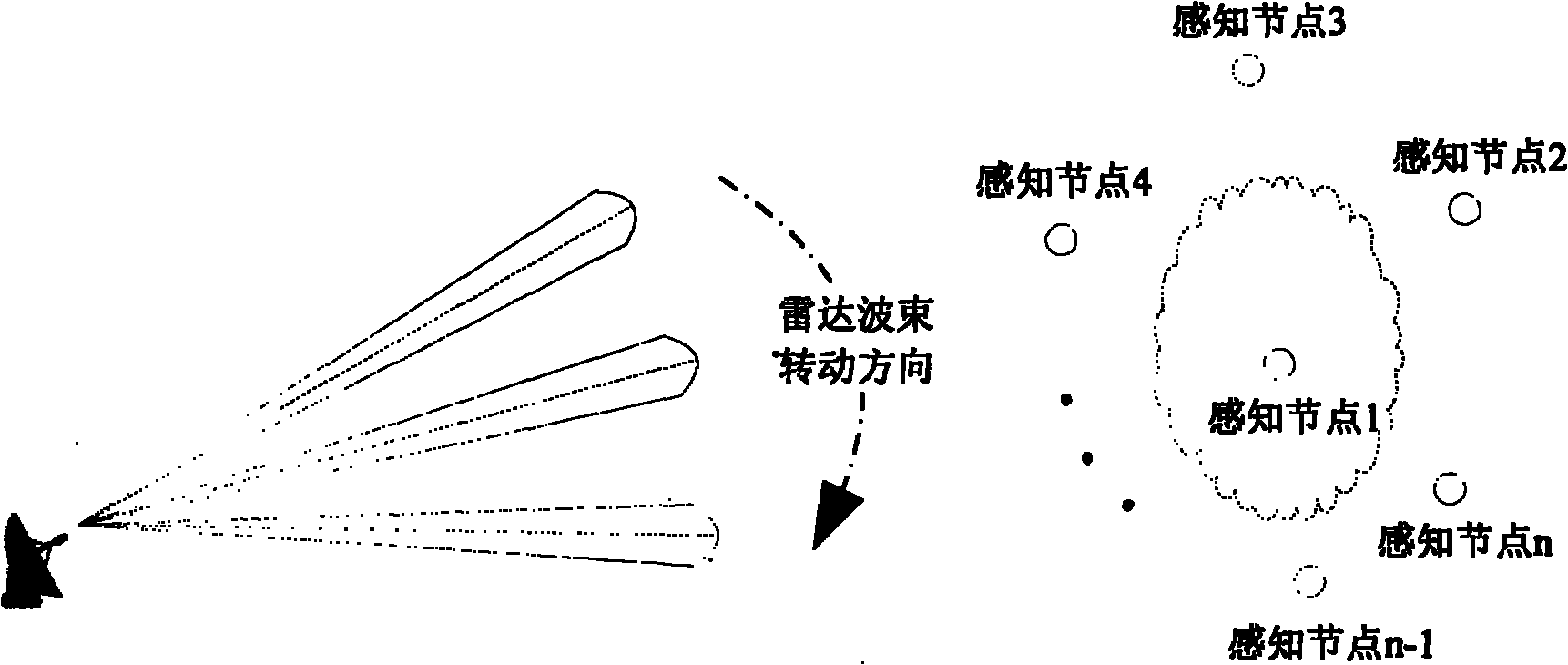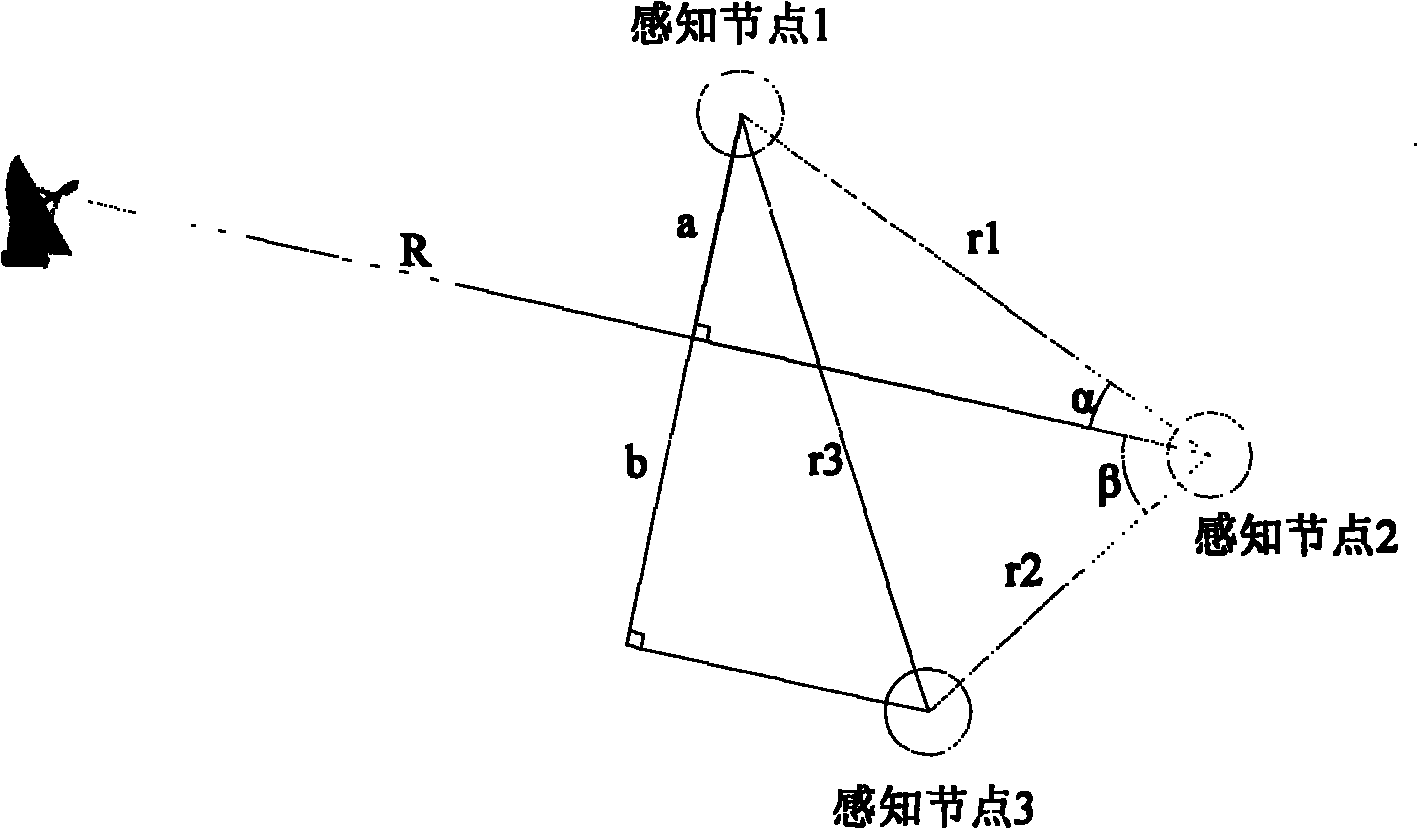Method for efficiently cooperatively sensing rotation scanning radar signals and system thereof
A scanning radar and collaborative sensing technology, applied in the information field, can solve problems such as inability to judge, generate false alarms, and long sensing time, and achieve the effects of short sensing time, strong reliability, and efficient sharing
- Summary
- Abstract
- Description
- Claims
- Application Information
AI Technical Summary
Problems solved by technology
Method used
Image
Examples
Embodiment 1
[0054] This embodiment provides a method for efficient cooperative sensing of rotating scanning radar signals, the method including the following steps:
[0055] Step 1, setting up a central processing node and several sensing nodes; the sensing node is a communication node with a sensing function and can work on multiple channels; the central processing node also has a sensing function.
[0056] Step 2, the central processing node selects certain sensing nodes to sense a certain channel in the radar frequency band, and obtains sensing results; the sensing results include the order in which each sensing node perceives the rotating scanning radar signal and the difference in sensing time;
[0057] The central processing node first senses a certain channel in the radar frequency band, and when the central processing node perceives a series of pulse signals, it selects certain sensing nodes near the central processing node and informs the selected sensing nodes to stop communicat...
Embodiment 2
[0071]The difference between this embodiment and Embodiment 1 is that the central processing node may not have a perception function, but is a node device with information collection and processing functions; in step 2, the central processing node itself does not perform perception, but Select a sensing node to sense a channel in the radar frequency band first;
[0072] The specific perception steps are:
[0073] B1. The central processing node first selects the first sensing node to sense a certain channel in the radar frequency band. After the first sensing node perceives a series of pulse signals, it sends the characteristic information and sensing time of the pulse signals to central processing node;
[0074] B2. The central processing node re-selects several sensing nodes near the first sensing node, notifies the re-selected sensing nodes to stop communication on the channel and requires the re-selected sensing nodes to The channel is sensed, and the central processing ...
Embodiment 3
[0083] The calculation process of the method of the present invention is:
[0084] Step 1', assuming that there are N communication nodes with sensing functions working on multiple channels, the communication nodes are called sensing nodes, and the distance between each sensing node is greater than twice the coverage radius of the base station;
[0085] Step 2', the central processing node first selects the first sensing node or the central processing node to sense a certain channel in the radar frequency band, and if it senses the occurrence of a series of pulse signals, it notifies the first sensing node or the central processing node Several nearby sensing nodes stop communication on the channel and require the selected sensing node to sense the channel, and the central processing node selects at least two of the sensing results fed back by the sensing nodes Sensing results of sensing nodes.
[0086] Usually, how many sensing nodes are selected for sensing results is deter...
PUM
 Login to View More
Login to View More Abstract
Description
Claims
Application Information
 Login to View More
Login to View More - R&D
- Intellectual Property
- Life Sciences
- Materials
- Tech Scout
- Unparalleled Data Quality
- Higher Quality Content
- 60% Fewer Hallucinations
Browse by: Latest US Patents, China's latest patents, Technical Efficacy Thesaurus, Application Domain, Technology Topic, Popular Technical Reports.
© 2025 PatSnap. All rights reserved.Legal|Privacy policy|Modern Slavery Act Transparency Statement|Sitemap|About US| Contact US: help@patsnap.com



